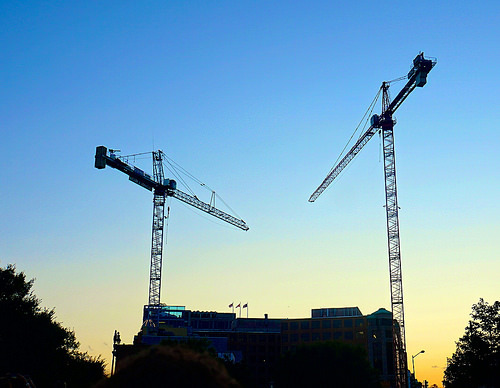DC’s inclusionary zoning could start serving poorer households
No one policy or program will fix the District’s affordable housing crunch. But later this month, one program that creates new affordable housing is poised to get a facelift to better serve low-income households.
On January 28, the DC Zoning Commission will look at tweaking inclusionary zoning, one of the main policy tools the District uses to generate new affordable housing units.
When new condos or apartments are built in DC, inclusionary zoning requires 8-10% of them to rented or sold more affordably, and only to people making under a certain income (today, 50-80% of area median income). In return, developers can build a few extra market rate units in order to offset the difference in overall cost.
Inclusionary zoning creates these new affordable units without subsidies from the Housing Production Trust Fund or other scarce public resources. That’s in contrast to most other programs, like direct investment in new housing, affordable housing preservation, or voucher programs.
DC adopted its inclusionary zoning policy in 2006 and finalized regulations in 2009. The first units arrived on the market in 2011. Now more than 1,200 permanently affordable inclusionary zoning units are on the market or in the pipeline.
Inclusionary zoning targets low, not very-low income households. That’s good.
Inclusionary zoning tends to best serve below-market, but not extremely below-market households. In other words, it helps people for whom housing is too expensive, but not way too expensive.
That’s because the price gap between what very-low-income households (30% AMI) can afford and market rates is simply too great for zoning tools alone to bridge. But low-income households (50-80% AMI) also need help from affordable housing programs, and inclusionary zoning helps these households without spending down scarce affordable housing subsidies.
Ideally, DC would create as much affordable housing as possible through inclusionary zoning and other off-budget policies like trading public land for affordable housing, because they do not have a direct financial cost to the city.
That would free up as much affordable housing subsidy as possible for very low and extremely low income families, who by far face the greatest housing challenges.
Except today, prices are a little too high to help these target households
Today, DC’s inclusionary zoning only requires that developments in high rise zones provide affordable units to serve households earning 80% area median income (AMI).
That’s a little too expensive. While the 80% AMI price is below-market in some DC neighborhoods, it is close to or above market rate in others. Moreover, 80% AMI (calculated for the region, and almost $70,000 annually for a two person household) is above DC’s Median Household Income ($64,267).
Today, 8 out of 10 DC inclusionary zoning units are produced at 80% AMI. Compared to successful programs in other cities, thats’s too high. An Urban Institute report noted that other with similar programs set affordability levels for rental housing between 55 and 70% AMI.
The report indicated that DC should consider following San Francisco’s ownership income targeting of 70% AMI. 70% AMI is also the standard for similar inclusionary zoning in Montgomery County.
After a long wait, the DC Zoning Commission may lower the affordability requirement
In early 2015, the Coalition for Smarter Growth, Metropolitan Washington Council of the AFL-CIO, Jews United for Justice, DC Fiscal Policy Institute, People’s Consulting, Somerset Development, City First Homes, and PolicyLink formally petitioned the Zoning Commission for changes to the inclusionary zoning regulations.
Since the Zoning Commission relies on staff and analytical support of the Office of Planning, it has waited for OP to fulfill its request for recommendations on potential revisions. Now, almost a year later, the Zoning Commission will consider these proposed changes (Zoning Case # 04-33G) and counter-proposals from OP.
The main changes the Zoning Commission will consider are:
- Increasing amount of affordable units in inclusionary zoning projects from 8-10% (now) to 12%
- Similarly increasing the density bonus from 20% to 22%
- Changing the AMI requirements to 60% AMI for rental units and 80% for ownership unit
- Making it easier for the Mayor or DC Housing Authority to buy inclusionary zoning units to lease to low- and very-low income households.
You can read the exact proposed changes and text amendments in this Zoning Commission Notice of Public Hearing.
Proponents of the proposed changes to inclusionary zoning are organizing supporters to attend the Zoning Commission hearing and speak in favor of the changes. The hearing is January 28 at 6:30pm, at 441 4th St NW, Suite 220-south.

